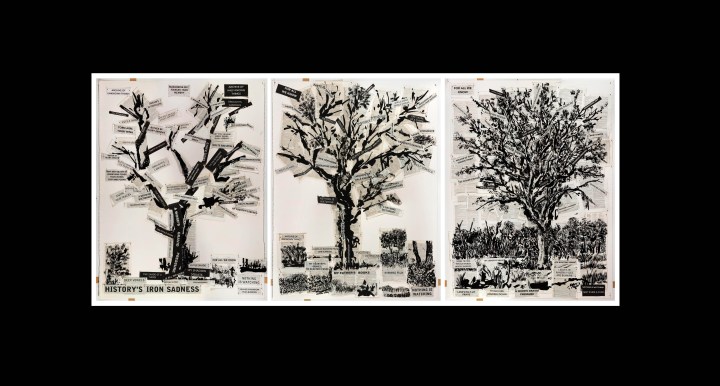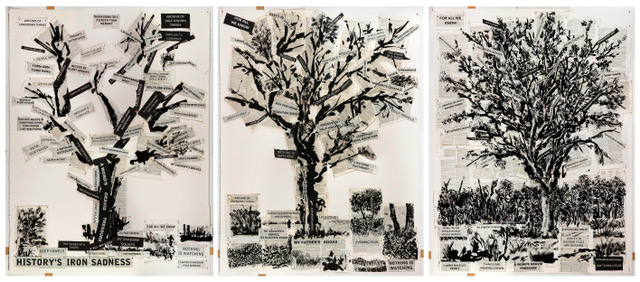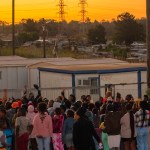Maverick Citizen
Unlocked: Poems for Critical Times (Series Two, Part One)

Poet Ingrid de Kok is initiating her second series of “Unlocked: Poems for Critical Times” with a poem of her own. What follows is her introduction to the second series and an account of her collaboration in 2013 with artist William Kentridge.
Editors’ note to readers: The automated sound device that accompanies all articles in the Daily Maverick is to assist readers who are blind or have reading difficulties. It is not designed for poetry. Where possible, we advise you to read the poems rather than listen.
“Unlocked” was initiated to respond to the way that people seem to turn to poetry in periods of personal sorrow or when there is great public upheaval, disquiet and dread. Poetry’s rhythms, image building and metaphorical capacity help unlock and reframe feelings, ideas and experiences we cannot express in ordinary discourse and can make us more aware of our linguistic and creative resources.
In this second series of “Unlocked” I hope to continue to print poems which articulate, with urgency or restraint, the timbre of the times. Themes – allusive or expository – will include the nature of artistic collaboration; continuity as well as disruption in human life and nature; the burden of inequality and poverty in our country; the solace, pleasure and passion that music, art and books inspire in poets; the delight of language itself; pleasures of family and friendship and the value of ordinary, apparently small things.

William Kentridge (drawings) and Ingrid de Kok (poem fragments), For all we know, nothing is watching, 2013, Indian ink and printed texts collage on Universal Technological Dictionary, or, Familiar explanation of the terms used in all arts and sciences by George Crabb, 1826, 160 x 121.5cm
Many writers and other creative artists work as solitary beings: some creative forms require this and so do individual personalities. But of course there is a whole tradition of collaboration within and across genres. During lock-down the idea of connection with the ideas and practices of others is ever more compelling.
My most potent experience of collaboration was in 2013 when I was asked by artist William Kentridge to collaborate with him on an image for the German newspaper Frankfurter Allgemeine Zeitung (FAZ), which had invited him to contribute to a supplement of specially commissioned writer-artist collaborations. In the end we made the three trees For all we know, nothing is watching that you see above.
The Capilano Review published our accounts of the process. What follows is a modified version of that exchange.
William: The drawings come from an ongoing series of trees I have been making, trees from the countryside around Johannesburg. Many of the drawings incorporate texts or phrases which come from my notes or lectures, but I wanted to work with a different kind of text in the drawings for the FAZ project. I have known Ingrid and her poetry for many years, am a big admirer of her poetic voice, and wanted to see how we could work together. At first I suggested we begin with a complete poem of hers; she suggested Vocation, (about the process of writing poems) as the text we could shatter and put into the drawing. But then we decided to work with fragments of her poems, already shattered, which hint at a meaning constructed from many poems, in the same way the tree drawings are constructed from many fragments, sometimes from different trees.
The process involved pinning words to the drawings in three versions. The two of us stood in my studio, with the phrases printed onto paper ribbons, testing different phrases in different positions, while Anne McIlleron, my assistant, next door was reprinting the text in different fonts and different point sizes, to find the right fit.
An essential part of the making was the constant movement backwards and forwards- moving fragments of text and tree, from one drawing to another – until all three trees had reached a state of provisional completion. The third and most leafy tree ( see below) developed the thoughts from the central tree, with additional themes emerging.
As Ingrid and I both had our childhoods in this part of the world, there is a sympathy, I think, of Ingrid for the drawings and me for her words – as not describing this world, but as coming from this soil.
Ingrid: Many years ago William agreed to let me reproduce his haunting drawing of a tree and burial site, Mbinda Cemetery as the cover of my second book, Transfer. So For all we know, nothing is watching turned out unexpectedly to be a revisiting of our original correspondence.
We exchanged numerous exploratory emails about possibilities we might pursue before we finally met to work in the studio. After William went to the Kunshistorisches Museum in Vienna, he wrote to me about seeing again the Cranachs and Memlings with early European paintings of trees in the foreground, the snake and the tree of knowledge and “the encyclopaedia in the tree” as he put it- “a new connection or had a part of me known all along?”
When I arrived in the studio there were three versions of the trees already drawn. As we worked, playfully, intensely, William would draw additional elements and respond to my selection of phrases. Some found a place in or on a tree, some did not. A general theme emerged in the process: fugitive pieces about writing, creativity, conflict, process, ageing, history. The final verbal composition is less a coherent text than a flow of phrases that hint towards a narrative, a response to the tree artwork – to the branches, roots, leaves, trunks – in language scrapings, parings, gleanings, sweepings. The phrases became a kind of concrete poem in which, as William put it, “their embeddedness in the drawing is their form.”

William Kentridge (drawings) and Ingrid de Kok (poem fragments), For all we know, nothing is watching, 2013, Indian ink and printed texts collage on Universal Technological Dictionary, or, Familiar explanation of the terms used in all arts and sciences by George Crabb, 1826, 160 x 121.5cm
DM/MC/ML



















 Become an Insider
Become an Insider